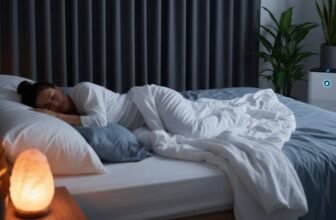
It’s 3:03 A.M. The house is silent. The street outside is dead quiet. But your eyes just snapped open like a window shade rolling up. You aren’t groggy; you’re awake. Your brain immediately starts downloading a zip file of every awkward conversation you’ve had since 2012 and worrying about an email you haven’t even received yet.
It feels lonely, doesn’t it? But honestly, if you could see through the walls of your neighborhood, you’d realize you’re actually at a massive, invisible party.
About one in three adults is awake with you right now. We call this “sleep maintenance insomnia,” but that sounds too clinical for what it actually feels like: a nightly betrayal by your own body.
Here’s the thing—and I need you to really hear this—you aren’t broken. You aren’t “bad at sleeping.” Your body is actually doing something technically correct, just at the wrong time. It’s a biological collision of hormones, blood sugar, and sleep cycles. And because it’s biological, you can’t “think” your way back to sleep. You have to “physiology” your way back.
That’s where the 4-7-8 Reset comes in. But before we get to the fix, we need to understand why the alarm keeps going off in the first place.
The “Devil’s Hour” De-Mystified (Why It’s Always 3 A.M.)

Have you ever noticed it’s rarely 1 A.M. or 5 A.M.? It’s almost always between 2:00 and 4:00. Historically, people called this the “Devil’s Hour,” creating superstitions to explain the spooky precision of it. But the culprit isn’t a ghost. It’s your adrenal glands.
1. The Biological Alarm Clock (Cortisol)
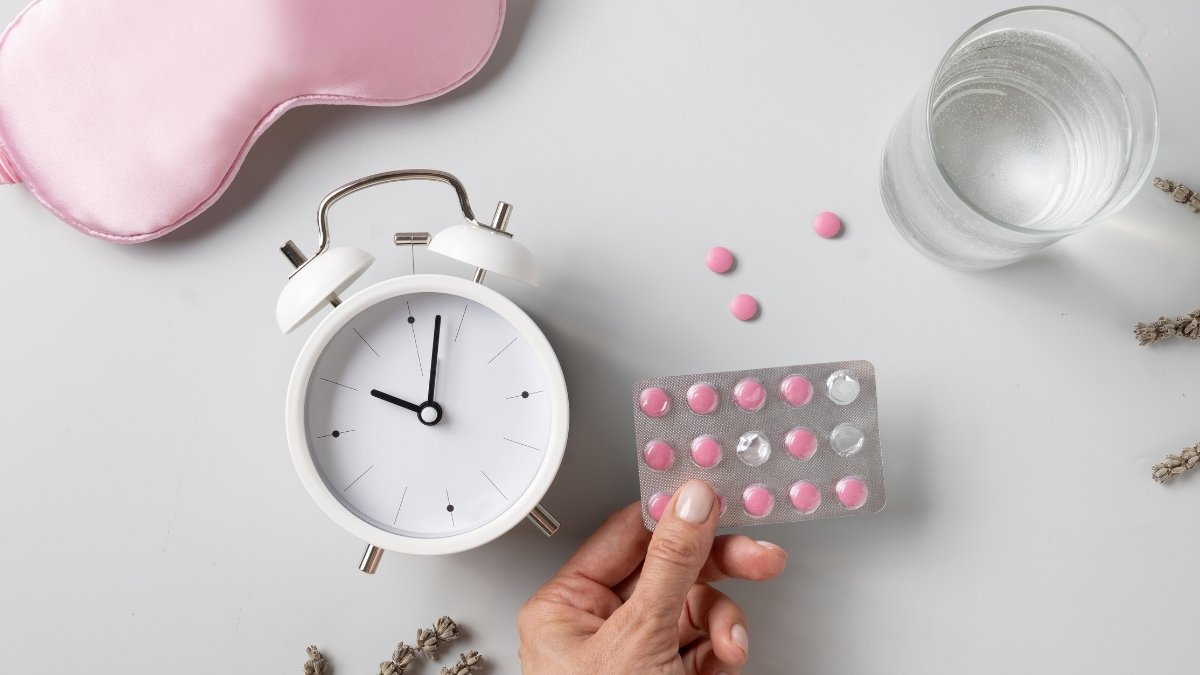
We tend to think of cortisol as the “stress hormone,” the bad guy that shows up when we’re anxious. But cortisol is also your “wake-up juice.”
Under normal circumstances, your cortisol levels bottom out around midnight—that’s what lets you stay in deep sleep. But starting around 2:00 or 3:00 A.M., your brain’s master clock (the Suprachiasmatic Nucleus) starts pinging your adrenal glands to release cortisol.
Think of it like a barista starting the coffee machine before the shop opens. Your body is trying to mobilize glucose (sugar) and raise your blood pressure just enough so that when your alarm goes off at 7:00 A.M., you can actually stand up.
The Glitch: In a perfect world, this rise is quiet and gradual. But if you’re stressed, overworked, or part of the “sandwich generation” (caring for kids and parents), your stress response is already sensitive. That quiet 3 A.M. cortisol rise? Your brain misinterprets it as a fire alarm.
The Result: You wake up with a pounding heart and a racing mind. It’s a “Cortisol Awakening Response” happening four hours too early.
2. The Fragile Sleep State

The first half of your night is dominated by Deep Sleep (Slow Wave Sleep). It’s coma-like; a marching band could walk through your room, and you might not wake up.
But after 3 A.M.? You switch gears. The second half of the night is mostly REM (Rapid Eye Movement) sleep and light sleep. REM is weird—your brain is actually more active during REM than when you’re awake. You are essentially hallucinating (dreaming) in a paralyzed body.
Because you’re bouncing between active dreaming and light sleep, you are incredibly fragile. A tiny spike in cortisol, a full bladder, or a drop in blood sugar is all it takes to shatter the surface.
3. The Sugar Crash (and the Liver Connection)

This is where Western science and ancient wisdom awkwardly high-five.
- Traditional Chinese Medicine (TCM) says 1:00–3:00 A.M. is “Liver Time.” They believe waking then means your liver is overwhelmed (often by stress or anger).
- Modern Physiology agrees, but adds details. Your brain is an energy hog. It eats glucose all night. If you ate dinner at 7 P.M., by 3 A.M., your blood sugar might dip. Your liver’s job is to release stored glycogen to keep your brain fed.
If your liver struggles to release that sugar smoothly—maybe because of alcohol (we’ll get to that) or metabolic stress—your brain panics. It thinks it’s starving. So, it releases adrenaline to release emergency sugar. Bam. You’re awake. Sweaty, hungry, and panicked.
The Manual Override: The 4-7-8 Breathing Technique

Okay, so you’re awake. Your heart is going thump-thump, and you’re thinking about your mortgage. You cannot “relax” your way out of this because your sympathetic nervous system (Fight or Flight) is driving the bus.
You need a manual override.
Enter the 4-7-8 technique. Popularized by Dr. Andrew Weil (but rooted in ancient Pranayama yoga), this isn’t just “taking deep breaths.” It’s a mathematical code that hacks your nervous system.
Why It Works (The Science)

It’s not magic; it’s mechanics.
- The Brake Pedal (Vagus Nerve): When you inhale, your heart rate naturally speeds up slightly. When you exhale, it slows down. By exhaling for 8 seconds (double the length of your inhale), you are physically forcing your heart rate to drop. You are stimulating the vagus nerve, which tells your brain, “We are safe. Stand down.”.
- The Sedative (CO2): That 7-second hold? It allows carbon dioxide to build up slightly in your blood. I know, CO2 sounds bad, but a controlled rise actually dilates your blood vessels (vasodilation). It calms the amygdala (fear center) and can make you feel slightly sedated.
The Data: A 2022 study on Heart Rate Variability (HRV)—the gold standard for stress measurement—showed that 4-7-8 breathing effectively flipped the switch from sympathetic (stress) to parasympathetic (rest) dominance, even in people who were sleep-deprived.
How to Do It (The Protocol)

Don’t just read this. Try it tonight when the 3 A.M. demons show up.
The Setup:
- Keep your eyes closed.
- Stay in your sleep position (on your back is easiest, but side is fine).
- Crucial Detail: Place the tip of your tongue against the ridge of tissue just behind your upper front teeth. Keep it there the whole time.
The Pattern:
- Exhale completely through your mouth, making a “whoosh” sound. (Empty the tank).
- Inhale quietly through your nose for a count of 4.
- Hold your breath for a count of 7.
- Exhale forcefully through your mouth (around your tongue), making that “whoosh” sound for a count of 8.
Repeat this cycle 4 times.
“Why the whoosh sound?” It sounds silly, but the sound is an auditory anchor. It gives your racing mind something to focus on besides your thoughts. Plus, the resistance creates back-pressure in the lungs that helps oxygen absorption.
Troubleshooting & Safety (Read This)
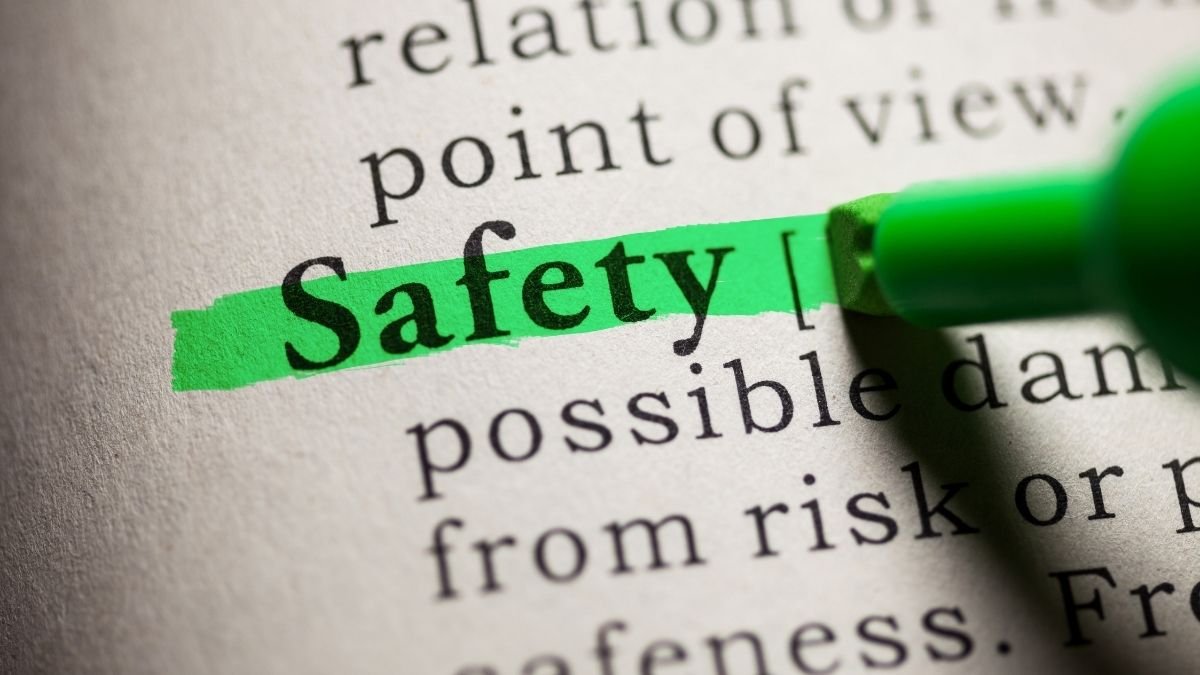
This is powerful stuff, so let’s be smart about it.
“I feel dizzy.” Totally normal. You’re changing your blood oxygen/CO2 balance. If you feel lightheaded, stop and breathe normally. It means you might be trying too hard.
“I can’t hold my breath for 7 seconds!” If you have asthma, COPD, or are pregnant (especially in the third trimester, where lung capacity is squished), do not force the hold.
- Modification: Just keep the ratio. Inhale for 2, Hold for 3.5, Exhale for 4. Or skip the hold entirely and just focus on making your exhale longer than your inhale.
“I’m pregnant, is this safe?” Yes, but listen to your body. If holding your breath feels uncomfortable, don’t do it. Focus on the slow, rhythmic 8-count exhale to calm your nervous system.
The Saboteurs: 3 Myths Keeping You Awake

You can breathe perfectly, but if you’re doing these three things, you’re fighting a losing battle.
1. The “Just One Look” Myth (Blue Light)

You: “I’ll just check the time on my phone.” Your Brain: “IT IS NOON! SUNLIGHT IS HERE!”
Your eyes have special sensors (ipRGCs) that are uniquely sensitive to the blue light from screens (around 460-480nm). Studies show that even seconds of screen exposure can suppress melatonin and reset your circadian clock. If you check your phone at 3 A.M., you aren’t just checking the time; you are chemically telling your brain to start the day.
- The Fix: Get an old-school alarm clock. Cover the LED. If you wake up, stare into the darkness. It’s boring, and that’s the point.
2. The “Nightcap” Trap (Alcohol)

You: “A glass of wine helps me fall asleep.” The Science: It helps you pass out, but it ruins your sleep maintenance.
Alcohol is a sedative, but only for about 3-4 hours. Once your liver metabolizes it, your brain experiences a glutamate rebound. It’s a mini-withdrawal that spikes your excitatory neurotransmitters right around… You guessed it, 3 A.M. It also blocks REM sleep, so when the alcohol wears off, your brain tries to “binge” on intense dreams, waking you up.
3. The “Stay in Bed” Fallacy
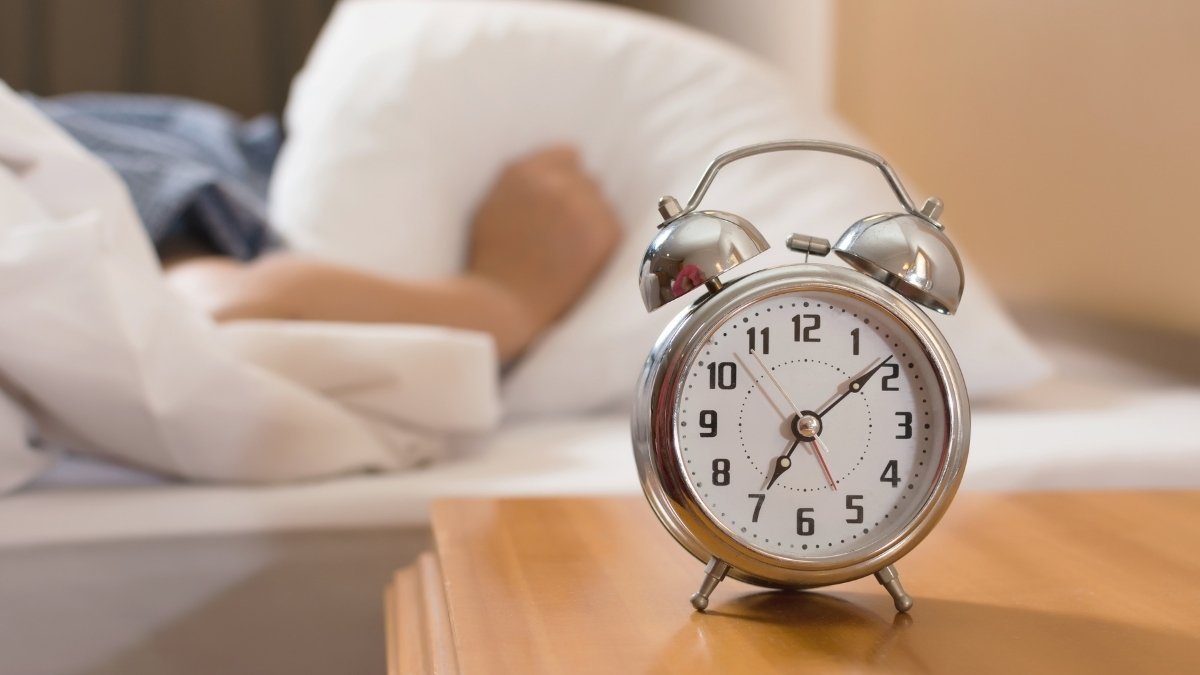
You: “If I just lie here, I’ll eventually sleep.” The Reality: If you’ve been awake for 20 minutes and you’re frustrated, get up.
This is the golden rule of CBT-I (Cognitive Behavioral Therapy for Insomnia). If you lie in bed fuming, your brain starts associating the bed with stress, not sleep. You are training yourself to have insomnia.
- The Fix: The 20-Minute Rule. If the 4-7-8 breathing hasn’t worked after roughly 20 minutes, get out of bed. Go to a dim room. Read a boring book (paper, not screen). Do not go back until you are sleepy.
Need More Help For Your 3 A.M. Battle? Look Into These
You don’t need to buy anything to fix your breathing, but let’s be real: our modern environments are aggressive. Between streetlights, blue light, and city noise, sometimes your physiology needs a little external armor. If you want to build a fortress around your sleep, these are the tools that actually work (no snake oil, just science).
1. Manta Sleep Mask (The “Blackout” Solution)
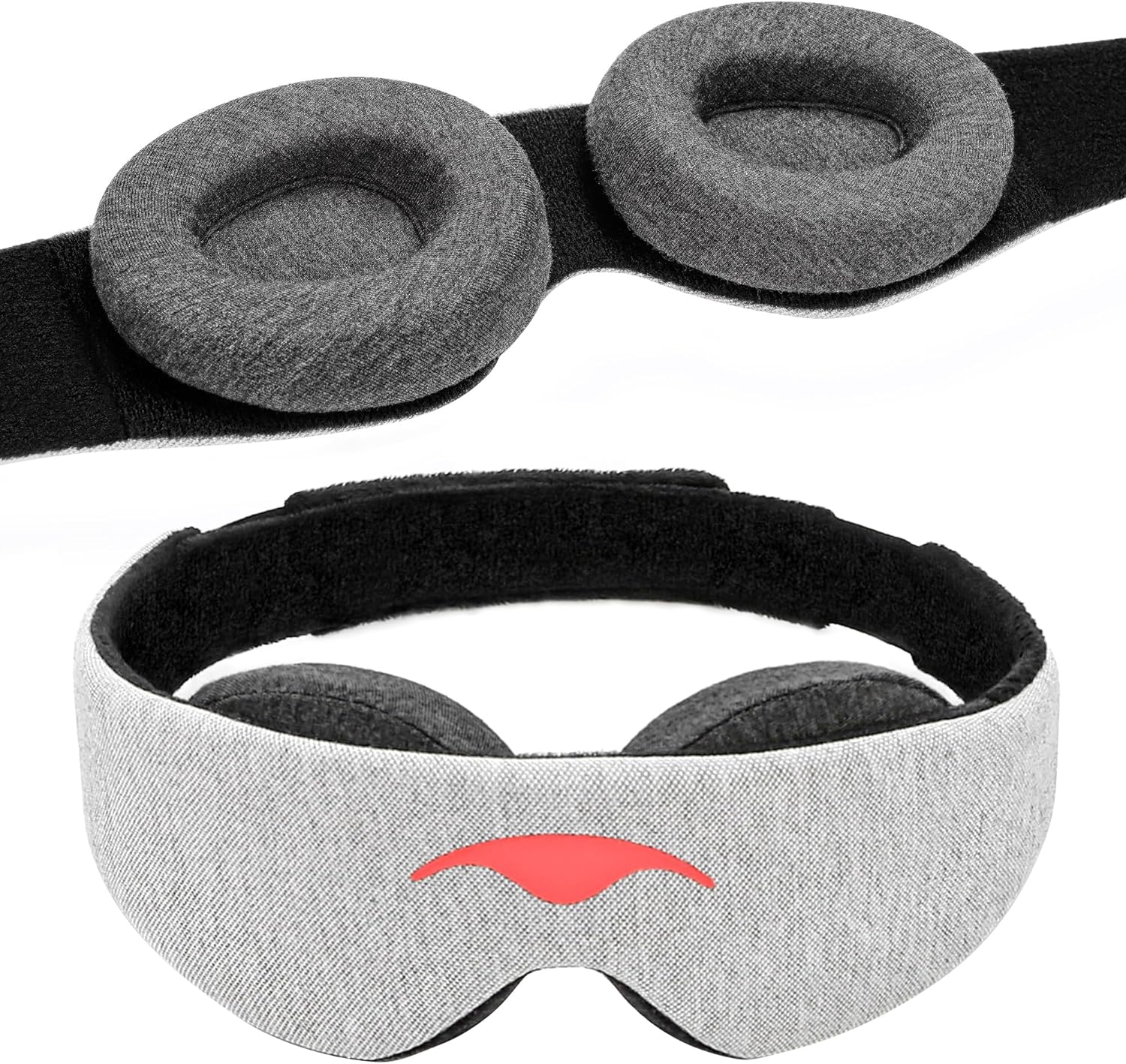
If you see even a sliver of light at 3 A.M., your brain stays alert. The Manta mask is unique because it has deep eye cups—meaning it blocks 100% of light without smashing your eyelashes. It’s a game-changer for side sleepers.
2. Hatch Restore 2 (The Phone Replacement)

We all know we shouldn’t use our phones as alarms, but we do it anyway. The Hatch Restore 2 replaces your phone with a sunrise alarm and a library of white noise (like “Heavy Rain” or “Fan”) that masks those random house-settling sounds that wake you up.
3. Loop Quiet Earplugs (Silence That Doesn’t Hurt)

Traditional foam earplugs can feel like you’re stuffing your ears with drywall. Loop Quiet plugs are made of soft silicone that sits flush in your ear, so you can lie on your side comfortably. They dampen the world just enough to keep you in deep sleep.
4. Swanwick “Swannies” Blue Light Blocking Glasses

If you absolutely must look at screens in the evening (we’re all human), standard “computer glasses” won’t cut it. You need the deep amber-tinted lenses that block over 99% of blue light. Swanwick is the gold standard here for protecting your melatonin.
5. LectroFan Evo (Pure White Noise)
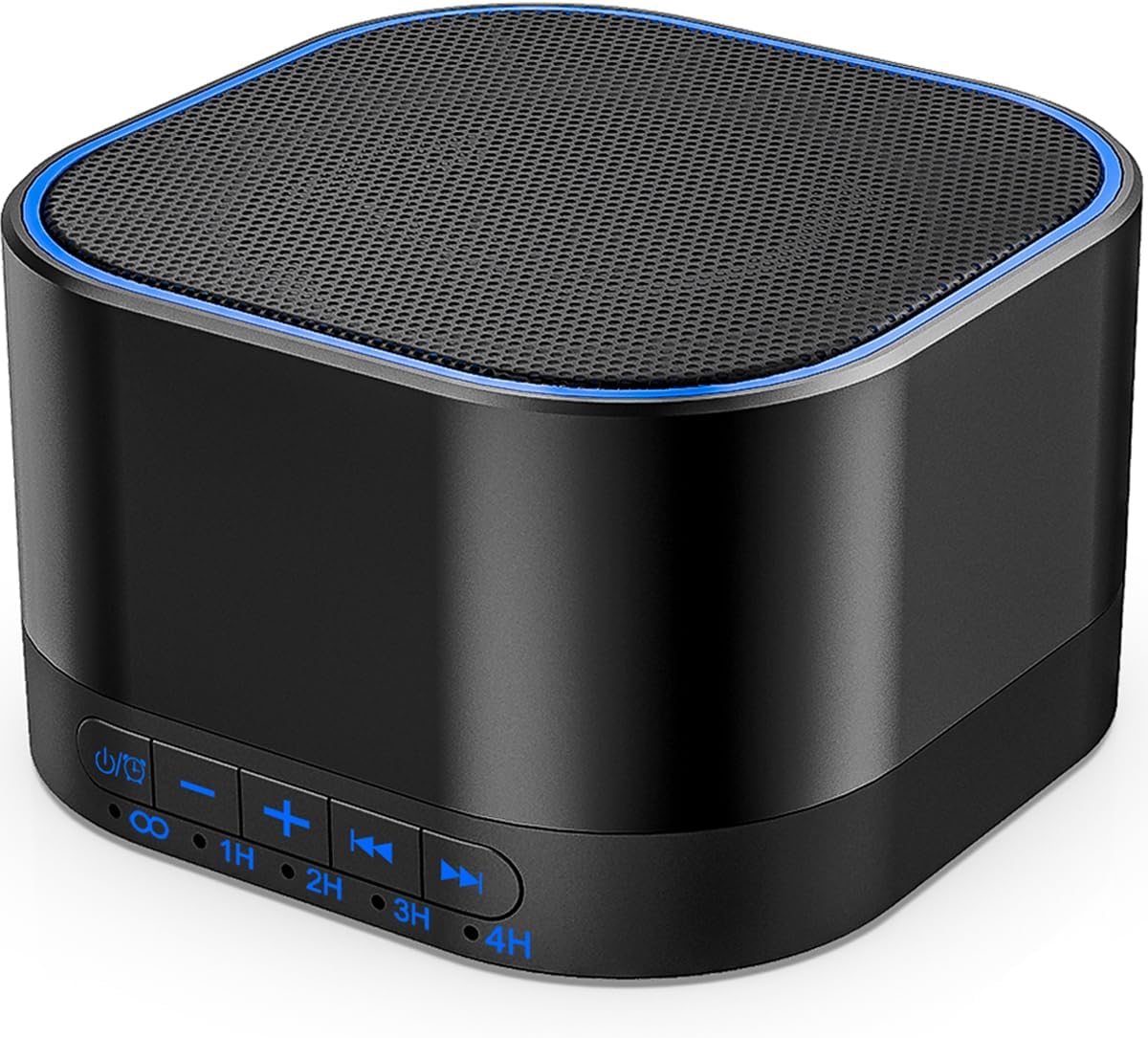
If the Hatch is too fancy and you just want a wall of sound to block out your neighbor’s dog, this is the workhorse. It doesn’t loop recordings; it generates non-repeating fan sounds dynamically. It’s boring, consistent, and perfect for sleep maintenance.
Final Thoughts
Waking up at 3 A.M. feels personal, but it’s just biology. It’s a sign that your “internal barista” is a little over-eager, or your “liver janitor” is working overtime.
Tonight, when the alarm goes off in your head, don’t reach for your phone. Don’t spiral into worry. Just anchor your tongue behind your teeth, and find that 4-7-8 rhythm.
Inhale (2, 3, 4). Hold (2, 3, 4, 5, 6, 7). Whoosh… (2, 3, 4, 5, 6, 7, 8). You’re manually overriding the system. You’re telling your body, “I’ve got this.” And eventually, the body listens. Sweet dreams. (Hopefully).

